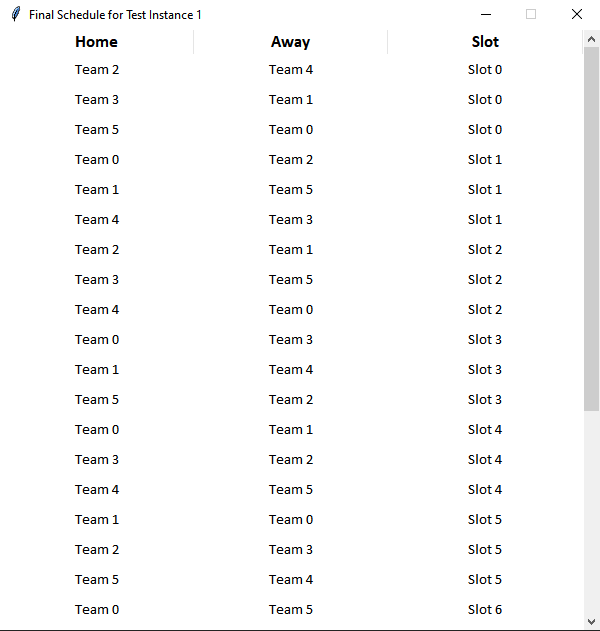Sports scheduling has interested various researchers and educators over the past years. The sports industry has become one of the largest businesses worldwide. Therefore, a good schedule would be beneficial to the multiple stakeholders involved, including club owners, staff and players, television broadcasters, club supporters and the amount of revenue generated.
Manual scheduling is a time-consuming process that generates less revenue when compared to automated scheduling, which delivers better schedules that are also generated in less time. This allows derby and rival matches to be broadcast at a more convenient time for supporters, resulting in a healthy relationship with the supporters and sports associations involved, and consequently generating more revenue.
Planning any form of sports league or tournament is essentially deciding when each match is to be played. Such a schedule is generally influenced by hard and soft constraints. Hard constraints
are schedule features that cannot be violated and are generally set by the organisers. On the other hand, soft constraints (or restrictions) express preferences that should be respected. Soft constraints are typically imposed by stakeholders and other interested organisations, such as media companies and football teams, to maximise revenue received throughout the season. These vary between different tournaments and leagues.
Planning any form of sports league or tournament is essentially deciding when each match is to be played. Such a schedule is generally influenced by hard and soft constraints. Hard constraints
are schedule features that cannot be violated and are generally set by the organisers. On the other hand, soft constraints (or restrictions) express preferences that should be respected. Soft constraints are typically imposed by stakeholders and other interested organisations, such as media companies and football teams, to maximise revenue received throughout the season. These vary between different tournaments and leagues.
This project incorporated research regarding different sports-scheduling algorithms and approaches aimed at obtaining a more insightful look into this area. A meeting was held with a person involved in scheduling the Belgian Pro League, to discuss his experiences with generating sports schedules. The datasets used were sourced from the International Timetabling Competition on Sports Timetabling. An integer linear programming algorithm was used to develop such schedules. The main aim was to obtain a schedule with the least number of breaks and soft-constraint violations.
The results obtained were compared to previous results and a validator provided by the International Timetabling Competition on Sports Timetabling.


References/Bibliography:
[1] Van Bulck, D., Goossens, D., Beliën, J. and Davari, M., 2022. ITC2021 | Sport Scheduling Research Group. [online] Sportscheduling.ugent.be. Available at: <https://www.sportscheduling.ugent.be/ITC2021/> Gurobi Optimization. 2022. [online] Available at: <https://www.gurobi.com/>
Student: Oleg Grech
Course: B.Sc. IT (Hons.) Software Development
Supervisor: Dr Colin Layfield
